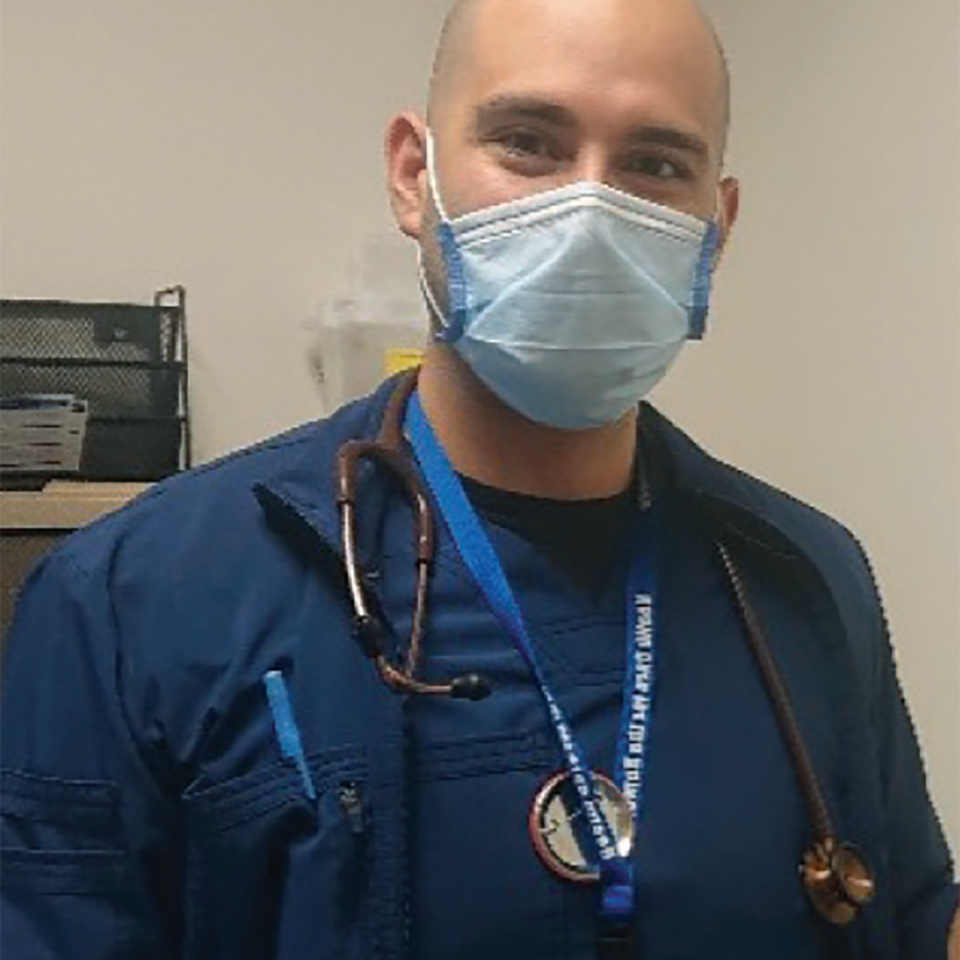Pass the Mic features the voices and stories of people with a lived experience of homelessness. In this edition, hear from Deborah - a US Army veteran, Bingo lover and lifelong volunteer.
The Mayor’s Office of Homeless Services has declared a winter shelter warning for Friday, January 24, 2025, at 4 pm until Wednesday, January 29, 2025, at 9 am. Call 211 (available 24/7) or 443-984-9540 to connect with shelter. Get more info here.



01.24.22
A calm enters the room with Erick Torres. He sits across from a young girl in her mom’s arms and is fully engaged as they talk through vacunas (vaccines) and developmental milestones. Their meeting flows uninterrupted—there are no gaps for translation—leaving more time to discuss follow-up as the little girl wriggles in her chair.
Erick supports children and families as a bilingual Pediatric Registered Nurse. More than 30% of the clients we see are best served in Spanish—a percentage that is growing every year. And most Hispanic/Latinx families initially come seeking care for their kids.
“When I sit down, clients get so excited,” he laughs. “‘Finally, we have somebody that speaks Spanish!’”
Erick understands that linguistic and cultural barriers impact health outcomes and disempower clients in the exam room.
Each week, he confronts dangerous miscommunications—like a woman who received x-rays of her legs at the hospital, when really her arm was sprained. Or an interpreter who translated the word “lung” as “organ.”
When you share the same language, Erick explains, children and families can have more honest, intimate conversations about their medical histories and health goals. They can more confidently explore a host of topics—from mental health, diet and wellness to sexual health.
“It’s very important to me that [providers] can understand me,” agrees Lila, a mom new to Maryland who was here to get her son up-to-date on his vaccines. “With an interpreter, they’re talking with someone else in English, so you’re not building trust with the person you’re talking to. In your own language, there’s a quality change.
When my nurse or doctor is also Latino, it gives me security that I’m going to be well taken care of.”
Even as word spreads among Hispanic/Latinx communities that Health Care for the Homeless is a safe place to go for care, we have much to do to better meet the needs of Spanish-speaking clients—a priority identified in our Racial Equity and Inclusion Action Plan.

Among the concerning health disparities faced by people in our care, Latinx clients are 57% more likely to have uncontrolled diabetes.
As a first step, we launched bilingual competency tests for each specialty (along with pay premiums). 15 staff have qualified so far. And like Erick’s role, we’re integrating bilingual requirements into many of our job listings.
“Families are definitely getting in contact with us a lot more often,” Erick says, pointing to language access as a key factor.
“There were people in the past we had trouble reaching who are now the one’s calling me,” he chuckles, delighted to see the shift in clients safely and proactively seeking health care. “They ask, ‘Will you be available next Tuesday?’”
“!Sí! Ven a verme.” (Yes, come see me!)
More Recent News
Follow a “Day in the life” of SOAR, one of our littlest known programs that makes a big impact for people experiencing homelessness with mental health disabilities. SOAR Coordinator Mina Davis-Harrison and Disability Outreach Assistant Specialists Dave Ramsey and Natasha Legette facilitate the national “SSI/SSDI Outreach, Access, and Recovery” program for all of Baltimore City.
Youth Empowered Society (YES) is Baltimore City’s only drop-in center for youth experiencing homelessness. We chatted with Program Director Ciera Dunlap about the need for youth services, the new location and the year ahead.
Many of our public policies create and prolong homelessness. Regardless of the political party in office, each of us has the power and responsibility to https://nhchc.org/make our values known.



